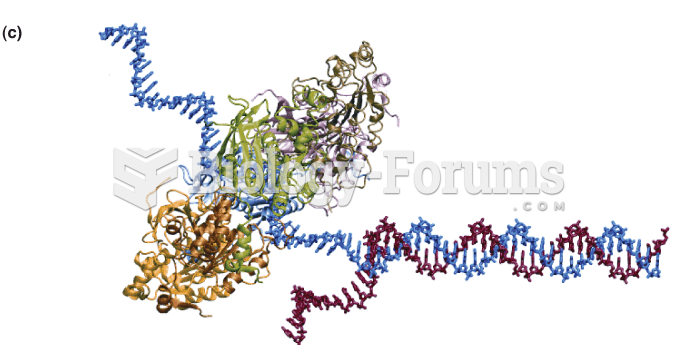|
|
|
You should not take more than 1,000 mg of vitamin E per day. Doses above this amount increase the risk of bleeding problems that can lead to a stroke.
Though newer “smart” infusion pumps are increasingly becoming more sophisticated, they cannot prevent all programming and administration errors. Health care professionals that use smart infusion pumps must still practice the rights of medication administration and have other professionals double-check all high-risk infusions.
There are over 65,000 known species of protozoa. About 10,000 species are parasitic.
On average, someone in the United States has a stroke about every 40 seconds. This is about 795,000 people per year.
The first oncogene was discovered in 1970 and was termed SRC (pronounced "SARK").







